What's New
Displaying results 3941 - 3950 of 4052

Resource | Publications,
This intervention-linked research aimed to (1) rapidly reduce the prevalence of common curable STIs in Angeles City and (2) maintain STI reductions over time.
Significant reductions in prevalence of common curable STIs are possible when effective interventions reach core groups such as sex workers. In Angeles City, a single round of presumptive antibiotic treatment had a short-term impact on STI prevalence that was proportional to coverage. Longer-term maintenance of STI control requires establishment of effective preventive and curative service.
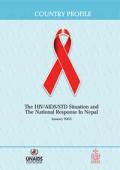
Resource | Publications,
Over the last years the HIV/AIDS epidemic in Nepal has gained ground, and Nepal has progressed from a "low prevalence" country to one with a so-called "concentrated" epidemic in certain sub-groups of the population. For Nepal the window of opportunity is closing fast to effectively address the epidemic. Without mounting a vigorous, broad-based response now, AIDS may become the leading cause of death in the age group 15-49 years over the next ten years.
The aim of the "The HIV/AIDS/STD Situation and the National Response in Nepal" booklet is to give an overview of the situation and the response to HIV/AIDS in Nepal, and to touch on priorities and challenges. This publication is jointly published by the National Centre for AIDS and STD Control (NCASC), and the United Nations Theme Group on HIV/AIDS in Nepal.
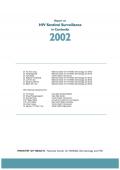
Resource | Publications,
The ultimate goal of second generation surveillance is to prove information of relevance to policymakers for public health section. HIV surveillance systems help countries find track HIV infection, both in term of geographic location and key populations affected.
The 2002 round of HIV Sentinel Surveillance (HSS) is the eighth in a series of annual surveys that have taken place in Cambodia beginning in 1994 (no data were collected for the year 2001.
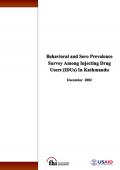
Resource | Publications,
Injecting drug users function as a “bridging population” for HIV transmission between a core HIV risk group and general population. The main objective of this study is to estimate the prevalent rates of HIV among IDUs and assess their role in the transmission of HIV. The study was conducted in four municipalities of Kathmandu, Lalitpur and Bhaktapur districts. Three-hundred and three male IDUs were sampled from 20 different randomly selected sites, through respondent-driven sampling (RDS). In Kathmandu, fifty-seven females were sampled randomly instead of using the RDS method.
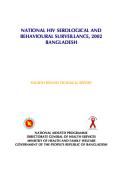
Resource | Publications,
HIV prevalence is monitored annually among specific groups at sentinel sites spread across Bangladesh. Behaviours that carry a risk of HIV infection are evaluated in tandem. Syphilis and hepatitis are also monitored as surrogate markers to corroborate behavioural data regarding unprotected sex and unsafe injections.
This report presents the findings and conclusions from the fourth round of national HIV serological and behavioural surveillance that was conducted in 2002. The information obtained can serve as a tool to inform programme policy and interventions, to advocate for increased resources and investment in prevention, aid in targeting interventions, and in measuring their progress and impact.
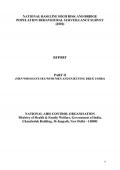
Resource | Publications,
Behavioural Surveillance Survey (BSS) in the general population and high-risk groups is to be undertaken three times during the period 2001-2005.
The present report details the observations of the national baseline BSS survey among high-risk groups, Men who have Sex with Men (MSM) and Injecting Drug Users (IDUs), which was conducted in 5 cities/States across the country. This baseline provides basic information needed to strategize and prioritize programs under NACPII during its five years of implementation.

Resource | Data Sheets,
Behaviorual Surveillance Survey (BSS) among men aged 18 years or more who have injected drugs in the last month. Survey was conducted in three large cities: Jakarta, Surabaya, and Bandung. Questions asked cover areas such as: Sexual Activity, Condom Use, Injecting Drug Use, HIV Testing.
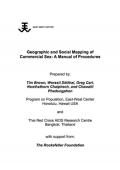
Resource | Tools,
The importance of commercial sex to HIV transmission has been well established in many places. Because sex workers and their clients change partners frequently, they are potentially exposed to HIV at much higher rates than others in the population.
This manual provides a set of guidelines for rapidly obtaining the information necessary to begin the development of effective prevention programs for sex workers and their clients.
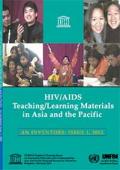
Resource | Tools,
This package is the fourth of a series of repackaged products aimed to serve as a vehicle for alerting our users to a wealth of highly valuable educational resources that exist in the field of HIV/AIDS in the context of adolescent reproductive and sexual health. The purpose of the UNESCO Regional Clearing House’s repackaging programme is to bring to the attention of the users valuable information which would never have been read simply because they seem not to be easily accessible. Very few probably know where they are located; or if they can be accessed, they come in either highly technical or unreadable language or understandably, in the national language. Very often, they also come in overwhelming volumes and very poor presentation that discourage reading.
The information consolidation and repackaging strategy of the UNESCO Regional Clearing House addresses this potential waste of resources by reviewing, analysing and selecting the most useful and relevant information, screening out poor information, processing them into more readable language culling out policy and practice implications and repackaging them into various attractive formats that would render themselves easily readable and applicable to decision-making and programme improvements.
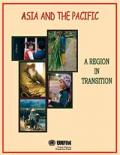
Resource | Publications,
At the International Conference on Population and Development held in Cairo in September 1994 and its subsequent review in 1999 (ICPD+5), 179 countries agreed that population and development are inextricably linked, and that empowering women and meeting people’s needs for education and health, including reproductive health, are necessary for both individual advancement and balanced development. Advancing gender equality, promoting male responsibility, eliminating violence against women and ensuring women’s ability to control their own fertility were acknowledged as cornerstones of population and development policies.





